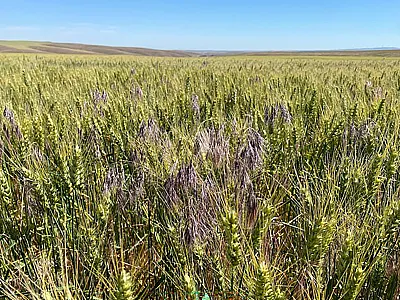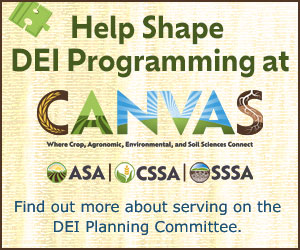Writing Advice for Graduate Students to Become Published Scientists

The pinnacle of graduate studies is the publication of a body of research through a thesis or dissertation, but research projects may also be published as independent articles. Writing for peer‐reviewed academic journals provides excellent experience and is a welcome addition to a CV, especially for those interested in academic positions. However, it can be a daunting task to submit work to a peer‐reviewed journal as a student. Our objective with this article is to make that process easier by providing several tips to maximize the impact of your work for publication.
Making a Good Title Great
An impactful title is key to enticing others to learn about your work. Paiva et al. (2012) analyzed the titles of more than 420 articles from life science journals for traits that led to higher views and citation metrics. Their first conclusion: shorter is better. Articles titles with fewer than 94 characters were viewed and cited significantly more than articles with longer titles. Readers have short attention spans, so a short title can allow them to grasp a concept easier than a long title. The researchers also found that conclusion‐driven titles are more impactful than method‐driven titles. Readers want to know the results of your work as quickly as possible, so they can gauge if they are applicable to their own research.
The final takeaway from this article is to avoid the use of geographic locations and non‐letter characters. Question marks, hyphens, and colons can distract a reader from the main point and lead to confusion. Using a specific location can lead to readers discounting the article because it might not be applicable to them. Using these findings, we can turn a title that may not get much interest into one that should generate high awareness.
Poor title: “A Multi‐Year Study of Soil Fertility in Upstate New York: Does the Timing of Manure Application Affect Soil Organic Matter or Yield in No‐Till Soybean [Glycine max (L.) Merr.] Production?”
Good title: “Fall Manure Application Increases Soil Organic Matter and Yield in No‐Till Soybean Production”
The poor title contains 187 characters compared with 93 characters in the good title. It also contains a location reference, a colon and question mark, and lacks any reference to results. The good title is clear, concise, and immediately displays the results to the reader. Using these strategies can help your titles stand out in the crowd of continuous publications.
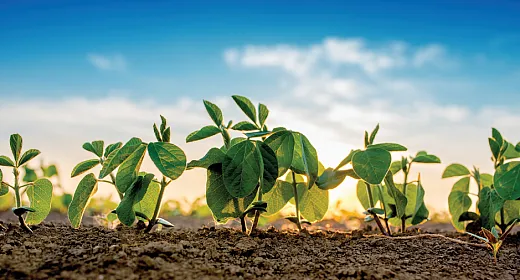
An Amazing Abstract
An abstract is the elevator pitch for your paper. Great abstracts follow an hourglass approach (Figure 1): Start with a general background; focus in with objectives, methods, and results; and finish broadly with conclusions. Most abstracts range from 200 to 250 words, and many journals have specific requirements for abstract lengths (Andrade, 2011). The Soil Science Society of America Journal, for example, has an abstract length limit of 1500 characters, which is about 250 words. Each section only needs to be a few sentences long, so the entire abstract should not exceed 10 or 12 sentences.
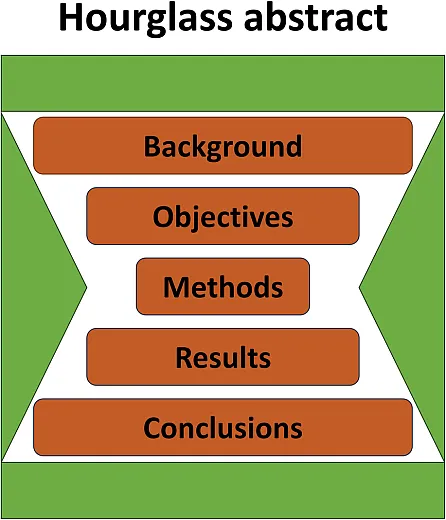
In the background section, it is important to frame your work. It is great to write in broad terms here, but avoid stating obvious facts. For example, anyone who has ever read an article in an agriculture‐related journal knows the world population is expected to be more than 9 billion by 2050. There is no need to restate this fact. Instead, describe the why of your work. Why are you doing it? Have others done similar things? If we think back to our manure application example from the previous section, a good background may be:
Spring manure applications have been shown to increase soil fertility in conventional cropping systems, but little work has been done with fall applications in no‐till agriculture. Fall applications have the potential to decrease nitrogen leaching while no‐till methods can improve overall soil health.
These sentences both lay out the state of the science and describe the impetus for your research. A good way to transition from the background to the methods is with an objective statement:
We sought to understand the interaction between manure application timings and cropping systems.
The methods section comes next. The goal of this section is to simply describe what you did in the study. Note an emphasis on “simply.” Do not include extraneous details—instead focus on the most important variables tested:
We compared the yield of soybean (Glycine max) grown in both conventional and no‐tillage cropping systems with fall or spring manure applications of 0, 50, and 100 kg nitrogen (N) per hectare over two years.
This sentence describes exactly what was done and includes the important variables: tillage system, application timing, application rate, and year. While it is often tempting to be more descriptive than not, the abstract is the place for brevity. You must carefully balance giving readers enough information to be interested in your work to read more without spilling all the beans at once.
After the methods are the results. This is where the main results of the study are described. Avoid reiterating the title and instead be slightly more descriptive with your results:
Fall manure application increased soybean yield from 50 bushels per acre to 75 bushels per acre compared with spring manure applications in conventional tillage systems and 45 to 85 bushels per acre in no‐till systems in both planting years. A manure application rate of 100 kg N per hectare yielded higher in no‐till systems than conventional systems, but there was no interaction with application date.
These results describe all of the aforementioned variables and any pertinent interactions. They are clear and concise while still providing measured values instead of simply saying yields were higher or lower.
The final part of the abstract is the conclusion. This is typically a single sentence that states how your results are important in the broader scientific field.
Growers should consider fall manure applications to increase soybean yields in no‐till cropping systems while also increasing soil fertility.
What are the statistics for this abstract? 176 words, 1152 characters, and seven sentences. This is well under the majority of acceptable abstract lengths, yet it accomplishes everything an abstract should by clearly giving the reader a sufficient overview of the study.
Fantastic Figures and Tables
Presenting data in a simple and interesting manner is also an art. Figures are essential for improving the impact and clarity of research articles, particularly for early graduate students navigating the world of academic journal submissions. These graphics are effective tools for communicating complicated findings in a clear and concise manner, which helps readers understand and make sense of the material that is being provided. Graduate students should carefully plan their figures so that they complement the overall structure of their manuscripts while providing a significant contribution to the whole article. Not only can well‐labeled figures highlight important findings, but they also catch the eye of readers.
The type of data being used, and the goals of the research, will determine which type of figures should be made—graphs, charts, diagrams, or images. For a figure to be published successfully, it is essential to follow the target journal’s specific rules for figure format, resolution, and placement. Well‐designed figures not only demonstrate the breadth of a graduate student’s work, but they also improve the readability and significance of their academic contributions as a whole. Tables that are too lengthy and figures that do not pertain directly to the results are usually placed in the supplementary section of the journal article.
Mastering the Art of Literature Review
Literature review is an important part of both a student thesis/dissertation and introduction section of a journal article. Constructing a literature review stands as a crucial element in the publication process for graduate students and requires meticulous planning and precision. The process of literature review can be initiated by clearly defining the scope and objectives. The pertinent themes, theories, and methodologies relevant to the research can be outlined in a concise manner. Graduate students should undertake an extensive exploration of scholarly databases (i.e,. Google Scholar, ResearchGate etc.) to pinpoint seminal works and recent contributions, maintaining equilibrium between foundational and contemporary sources.
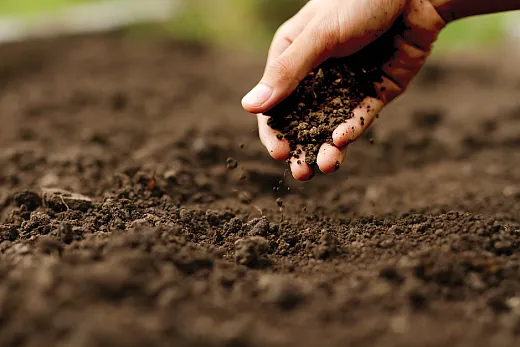
Systematically structure the literature by emphasizing linkages, ongoing debates, and looking at sources that fill gaps in current knowledge. Organize the literature logically by highlighting connections, debates, and gaps in existing knowledge. Develop a critical narrative that synthesizes the literature, emphasizing how each study contributes to the understanding of the research topic. Pay attention to citation styles and formatting, maintaining consistency throughout the process. Various citation management tools, which are mentioned in the next section, can be used to organize papers according to area of interest. Regularly update the literature review as the research progresses to incorporate the latest findings. Seek feedback from mentors or peers to refine the review, ensuring clarity, coherence, and a strong narrative thread.
By following these tips, graduate students can produce literature reviews that not only showcase their grasp of the field, but also contribute significantly to the scholarly discourse.
Managing Citations
Effectively handling references and citations is a crucial element of scholarly writing. Developing a robust system at the beginning of the research process can simplify tasks and improve the overall quality of the manuscript. The use of reference management tools like EndNote, Zotero, Mendeley, or Paperpile can significantly alleviate the challenges of organizing citations. These tools facilitate efficient storage, retrieval, and formatting of references in various citation styles.
It is essential to establish a consistent and meticulous citation style throughout the manuscript, ensuring proper crediting of all sources and adherence to academic integrity standards. Keeping the reference list updated as the paper progresses is vital to avoid last‐minute rushes and potential errors. Collaborating with mentors or peers for feedback on citation accuracy and completeness can also enhance the overall scholarly rigor of the paper. Ultimately, gaining proficiency in managing references not only contributes to the publication process, but also establishes a foundation for a disciplined and rigorous approach to academic writing throughout one’s research career.
GENERAL TIPS FOR GRADUATE STUDENTS
- Start early and plan strategically when thinking about publishing your work. Don’t wait until your graduation if you have material ready for publication.
- Take writing classes offered by your university or professional organizations. Attend writing workshops and seminars if you have the opportunity.
- Start a writing group and build a community. Writing takes time and peer support creates an environment for growth and improvement.
- Respond to feedback from your advisers constructively. Take criticism with openness and a willingness to revise and improve.
- Develop a routine of writing. Consistent writing habits contribute to sustained productivity and help in managing writing deadlines effectively.
- Build an online presence. Make your work visible on platforms like Google Scholar, ResearchGate, and LinkedIn to reach wider audiences.
Disclaimer: The examples provided here are meant to illustrate good writing practices only. Any similarity to a study in the past, present, or future, is entirely coincidental.
Connect With Us!
If you would like to stay up to date with the ACS Graduate Student Committee, learn more about our work, contribute to one of our CSA News articles, or suggest activities you would like us to promote, watch your emails and connect with us on Twitter, now called X, (@ACSGradStudents), Facebook (ACS.gradstudents), or visit: agronomy.org/membership/committees/view/ACS238/members, crops.org/membership/committees/view/ACS238/members, or soils.org/membership/committees/view/ACS238/members.
References
Andrade, C. (2011). How to write a good abstract for a scientific paper or conference presentation. Indian Journal of Psychiatry, 53(2), 1720175. https://doi.org/10.4103/0019‐5545.82558
Paiva C.E., da Silveira Nogueira Lima, J.P., and Paiva, B.S. (2012). Articles with short titles describing the results are cited more often. Clinics, 67(5): 509–513. 10. https://doi.org/10.6061/clinics/2012(05)17
Text © . The authors. CC BY-NC-ND 4.0. Except where otherwise noted, images are subject to copyright. Any reuse without express permission from the copyright owner is prohibited.





